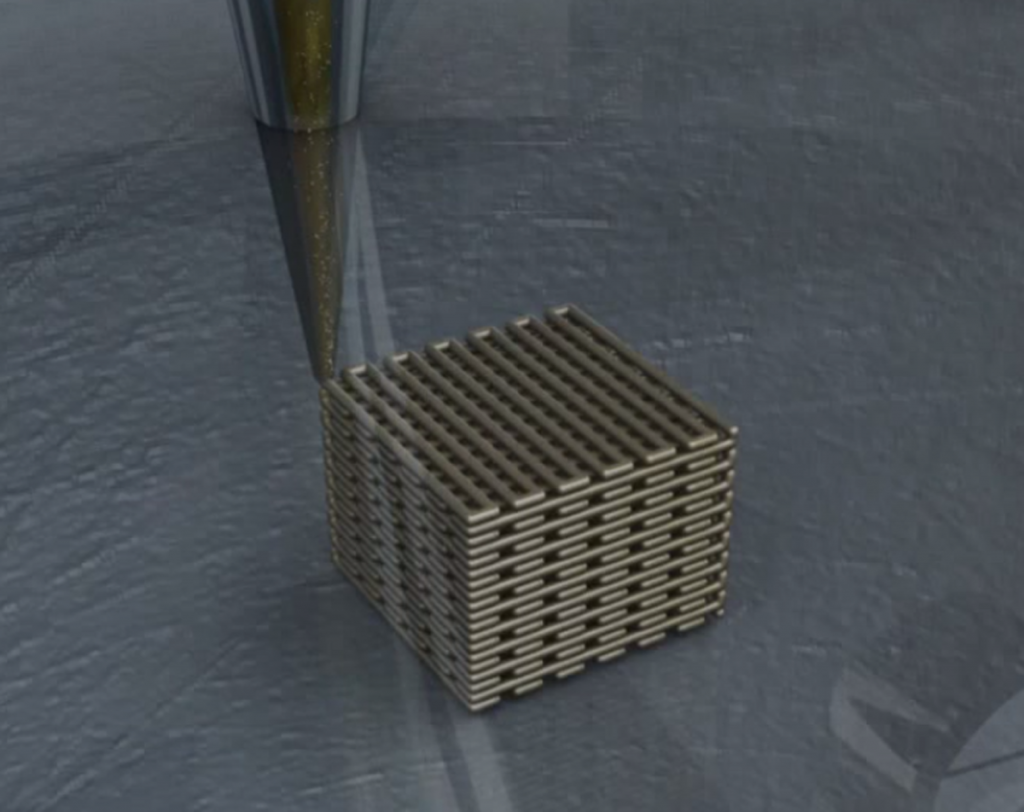Supported by the Lawrence Livermore National Laboratory (LLNL), researchers have successfully printed periodic 3D microlattices of graphene aerogel! A mouthful I know, but it’s something that’s never been achieved before and its groundbreaking news for graphene applications. But graphene aerogels…what and why? I hear you say.

Previous efforts to develop bulk 3D assemblies (using chemical vapor deposition) of graphene have fallen short in one way or another, with the end product being brittle, or the process being limited by its scalability. This is where aerogels come in. Aerogels, also known as ‘liquid smoke’, are ultralight materials where the liquid component of a gel is replaced by a gas or vacuum. They are highly porous and have exceptional insulating properties. Since producing graphene oxide (GO) based aerogels is a relatively simple technique with broad scope, it has become the most common way to make 3D graphene in bulk. But graphene aerogels developed so far have not been ideal since “they possess purely stochastic porous networks, which limit their performance compared with the potential of an engineered architecture; the architecture of these graphene networks remains largely random, precluding the ability to tailor transport and other mechanical properties of the material for specific applications (for example, separations, flow batteries, pressure sensors and so on) that might benefit from such engineering.”
So, a new method to produce 3D graphene aerogels needed to be developed that could be scaled easily and that allowed for the fabrication of controlled, uniform microstructures, while retaining the excellent properties of graphene. It would pave the way for the effective use of 3D graphene in macroscopic applications. This is where researchers turned to a 3D printing technique known as direct ink writing. It is an extrusion-based technique that works by pushing ‘ink’ (gel-based, viscoelastic materials that function like a continuous filament) out of a micronozzle at room temperature to create 3D macroscopic structures layer by layer. They adapted the technique for GO-based ink and successfully developed “a versatile method for fabricating a broad class of 3D macroscopic graphene aerogel structures of determined geometries, (which) could lead to new types of graphene-based electronics, energy storage devices, catalytic scaffolds and separation devices.”
The 3D printed graphene aerogels exhibit properties superior to traditionally developed graphene aerogels by an order of magnitude, and are more efficient for mass transport. They are lightweight, have a high surface area and stiffness, excellent electrical conductivity, and their stand-out feature is their supercompressibility (up to 90% compressive strain). Further, this 3D printing technique allows for the properties of the microlattices to be ‘tuned’, expanding its customizability and range of applications.
This isn’t the first time that researchers at LLNL have used or modified 3D printing techniques to create better materials with modifiable properties. Suffice to say, as far as work at LLNL is concerned, 3D Printing 2 – Traditional Manufacturing 0.




